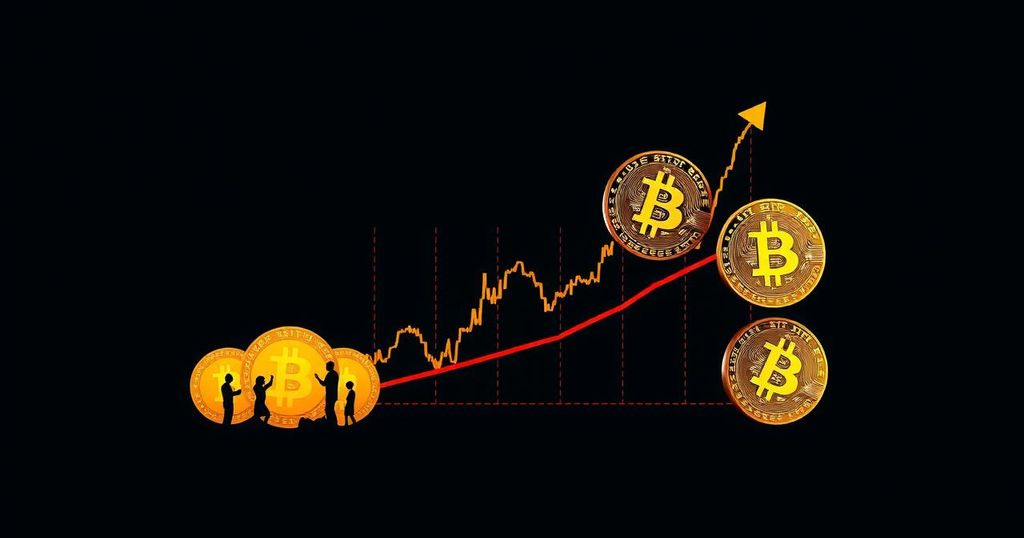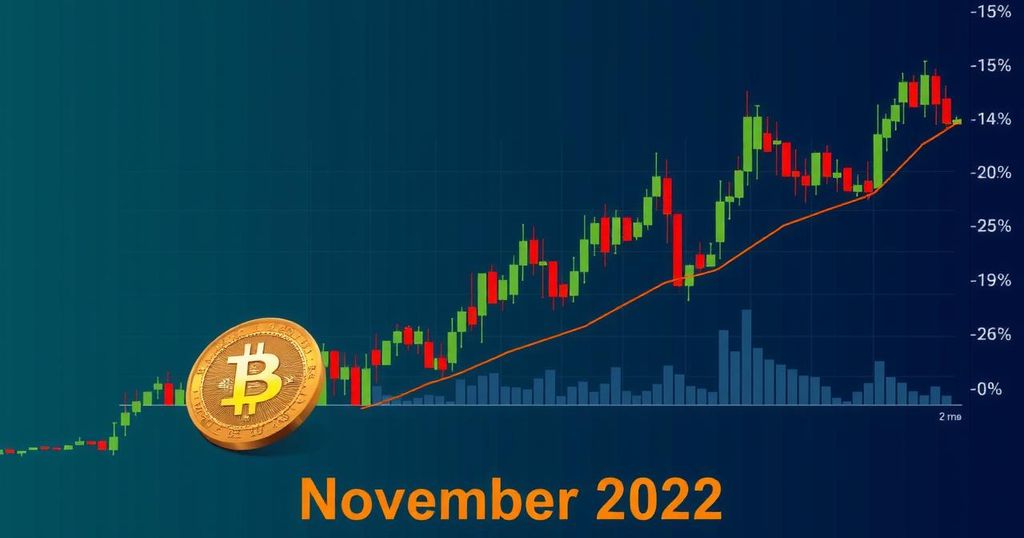Significant Decline in Bitcoin Prices Below $53,000 Amidst Economic Concerns
Bitcoin experienced a significant decline today, plummeting nearly 8% within a 24-hour period, as market participants reacted to several bearish influences, notably disappointing employment data. The cryptocurrency, which is the most well-known in the digital asset space, reached a low point of $52,530 by approximately 5 p.m. Eastern Standard Time, according to data from Coinbase and TradingView. This decline represented a reduction of about 7.8%, following an earlier peak of nearly $57,000 earlier in the day.
As of the current moment, Bitcoin has staged a modest recovery and is trading in the vicinity of $53,800; however, it remains unable to regain a substantial portion of the losses incurred earlier in the day.
Several analysts have identified multiple factors contributing to this recent downturn. Jacob Joseph, a senior research analyst at CCData, attributed the downward price trajectory to a combination of macroeconomic indicators, lackluster exchange-traded fund (ETF) inflows, and seasonal effects. He specifically referenced new U.S. jobs data that indicated the addition of only 142,000 net jobs in August, as reported by the Labor Department. Joseph remarked that recent revisions of job data indicate a more weakened labor market than previously understood, which has fostered investor concerns regarding a potential economic slowdown. This atmosphere has led to increased risk aversion among investors, thereby driving them away from higher-risk assets such as Bitcoin.
Brett Sifling, an investment advisor at Gerber Kawasaki Wealth & Investment Management, also noted the pivotal role of the underwhelming jobs report, indicating that investor uncertainty regarding the economy could signal an impending recession.
Despite the negative implications of today’s jobs report, Sifling suggested that it might encourage Federal Reserve officials to adopt a more dovish stance during their upcoming meetings and possibly lower interest rates. It is widely perceived that lower rates could positively impact Bitcoin’s market performance. Tim Enneking, managing partner at Psalion, echoed this perspective, estimating that any interest rate cuts could total between 75 to 100 basis points this year, which would be rapid relative to historical standards and may lead the U.S. and global economy towards a soft landing.
Joseph further emphasized the impact of seasonal trends, stating that the summer months typically experience reduced inflow of capital into ETFs, which subsequently hampers Bitcoin’s price stability. He warned that the cryptocurrency may face further challenges in the upcoming weeks if September’s performance mirrors historical statistics, which indicate an average return of -4.51% since 2010, marking it as the poorest performing month.
The current market sentiment is acutely cautious as it approaches an array of potentially market-moving events, including the upcoming U.S. Presidential Election debate and significant consumer price index (CPI) and Federal Open Market Committee (FOMC) decisions.
Furthermore, Julio Moreno, head of research at CryptoQuant, highlighted that demand for Bitcoin has been sluggish in recent months, as illustrated by recent analytical data.
Looking forward, while there seems to be a consensus on the influence of monetary policy on Bitcoin’s market, opinions diverge on the cryptocurrency’s future performance. Enneking characterized the current phase as transitional, devoid of clear bullish catalysts especially in light of diminished enthusiasm surrounding Bitcoin ETFs. He expressed concern over the support level at $54,000, positing a potential decline towards the early August low of $49,000 if this level fails to hold. Conversely, Greg Magadini, director of derivatives for Amberdata, projected a range-bound trajectory for Bitcoin between $55,000 and $65,000, suggesting that a drop into the high $40,000s could provide a favorable buying opportunity without being alarming.
Magadini further expressed optimism about Bitcoin’s longer-term prospects, projecting a recovery trajectory following the bear market lows of $16,000 over the next 12 to 18 months, supported by increasing global liquidity, forthcoming financial disbursements to FTX creditors, and a fiscal landscape conducive to asset price appreciation.








Post Comment